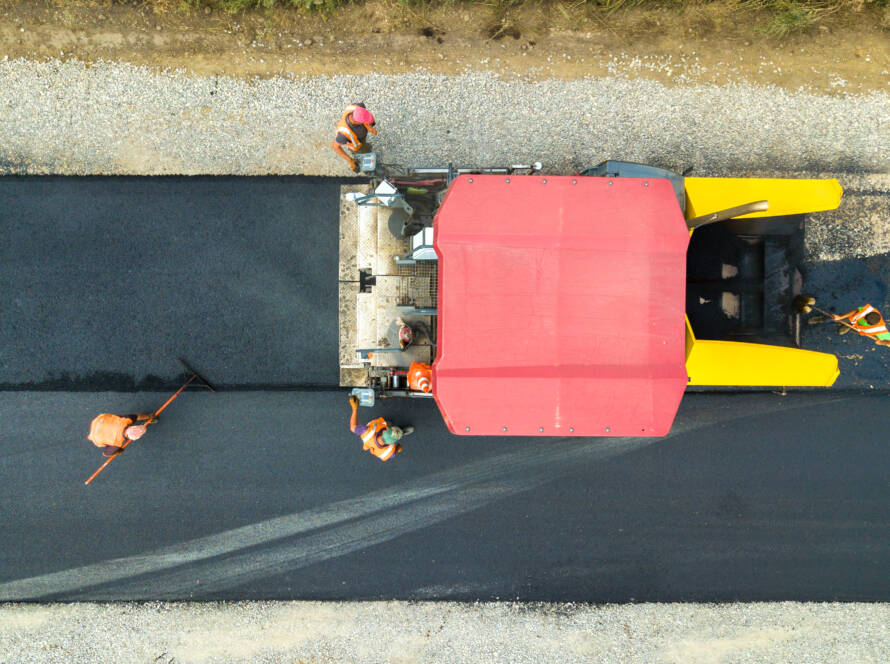Post-Resurfacing Road Maintenance: Ensuring Longevity and Safety
Resurfacing a road is a significant investment in infrastructure, and proper maintenance is crucial to maximize the lifespan of the new surface and ensure the safety of road users. This ultimate maintenance checklist provides essential steps to follow after resurfacing a road, helping to protect your investment and keep the roadway in top condition for years to come.
Immediate Post-Resurfacing Inspection
1. Conduct a thorough visual inspection of the newly resurfaced road, checking for any signs of damage, uneven surfaces, or areas that may require additional attention.
2. Verify that the road markings, such as lane dividers and pedestrian crossings, have been properly applied and are clearly visible.
3. Ensure that all manhole covers, drainage grates, and other road fixtures are level with the new surface and securely in place.
Regular Cleaning and Debris Removal
- Implement a regular cleaning schedule to remove dirt, debris, and other contaminants from the road surface, preventing them from accumulating and potentially causing damage.
- Pay special attention to areas prone to debris buildup, such as curbs, gutters, and drainage systems, to maintain proper water flow and prevent pooling.
- Consider using specialized street sweeping equipment to efficiently clean the road surface without causing damage.
Drainage System Maintenance
Proper drainage is essential to the longevity of a resurfaced road, as standing water can lead to deterioration and potholes. To ensure optimal drainage:
1. Regularly inspect and clean drainage grates, catch basins, and culverts to prevent blockages and ensure unobstructed water flow.
2. Monitor the road surface during rain events to identify any areas of poor drainage or pooling water, and address these issues promptly.
3. Repair any damaged or deteriorating drainage components to maintain the overall effectiveness of the system.
Crack Sealing and Patching
- Regularly inspect the resurfaced road for signs of cracking, as small cracks can quickly expand and lead to more significant damage if left untreated.
- Promptly seal any identified cracks using appropriate sealant materials, following the manufacturer’s guidelines for application and curing times.
- For more extensive damage or potholes, use high-quality patching materials and techniques to repair the affected areas, ensuring a seamless and durable fix.

Preventive Maintenance Treatments
Implementing preventive maintenance treatments can significantly extend the life of a resurfaced road and delay the need for more costly repairs. Consider the following treatments:
1. Fog Seals: Applying a light application of diluted asphalt emulsion to the road surface can help to seal small cracks, prevent oxidation, and restore the surface’s water resistance.
2. Slurry Seals: A mixture of asphalt emulsion, fine aggregates, and water, slurry seals fill minor surface irregularities, improve skid resistance, and protect the underlying surface from further deterioration.
3. Chip Seals: Applying a layer of asphalt emulsion followed by a layer of fine aggregate can help to improve surface friction, seal minor cracks, and protect the road from moisture intrusion and oxidation.
Monitoring and Record-Keeping
- Establish a system for regularly monitoring the condition of the resurfaced road, documenting any issues or areas of concern.
- Maintain accurate records of all maintenance activities, including dates, materials used, and specific locations of repairs or treatments.
- Use this information to plan future maintenance activities and budget allocations, ensuring the most effective use of resources.
“Proper maintenance is the key to maximizing the life of a resurfaced road and ensuring the safety of all road users. By following this comprehensive maintenance checklist, road authorities can protect their investment and provide a high-quality, long-lasting roadway for their community.” – Jane Doe, Road Maintenance Expert
By implementing this ultimate maintenance checklist after resurfacing a road, you can ensure that your investment in infrastructure pays off in the long run, providing a safe, durable, and reliable roadway for years to come.



